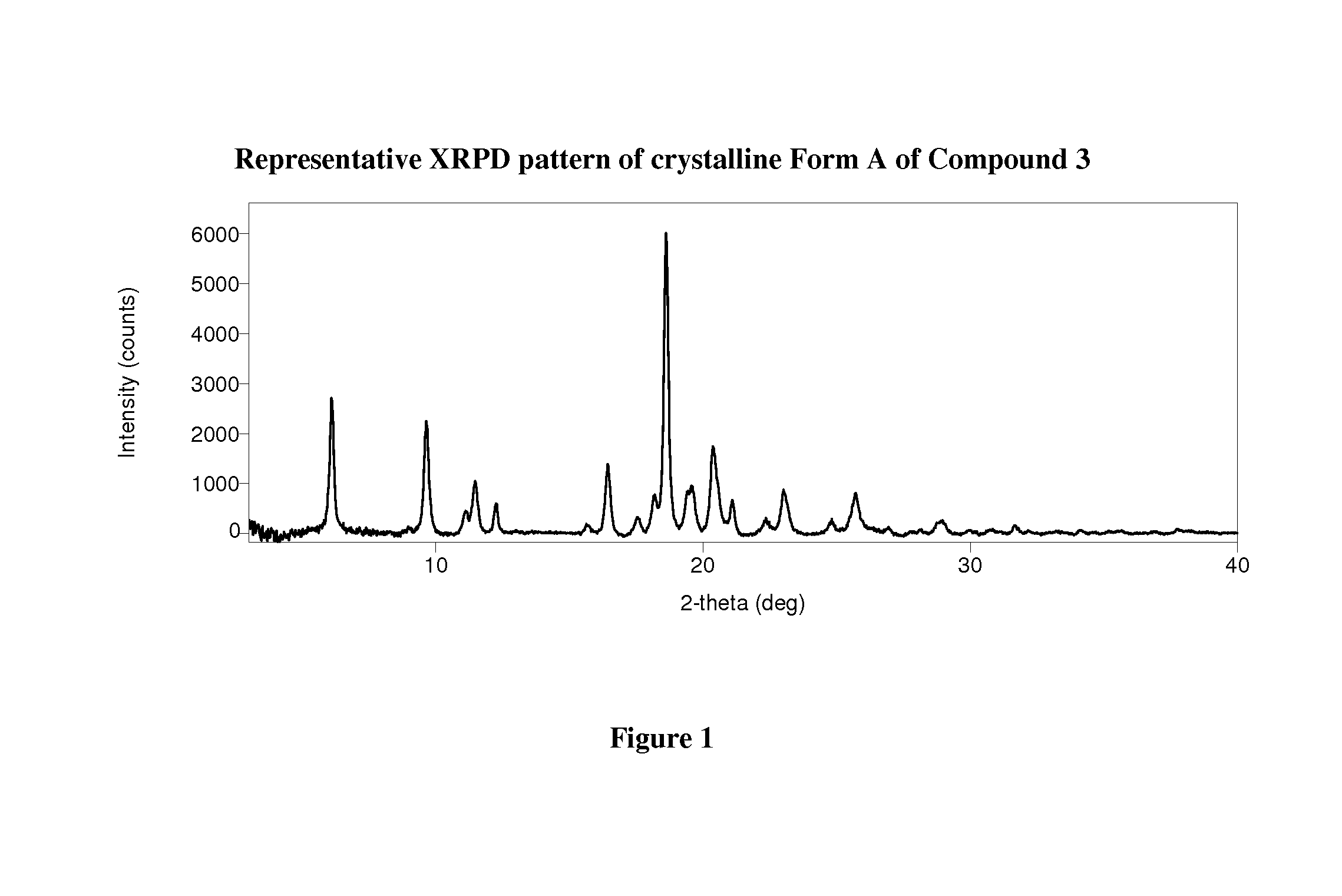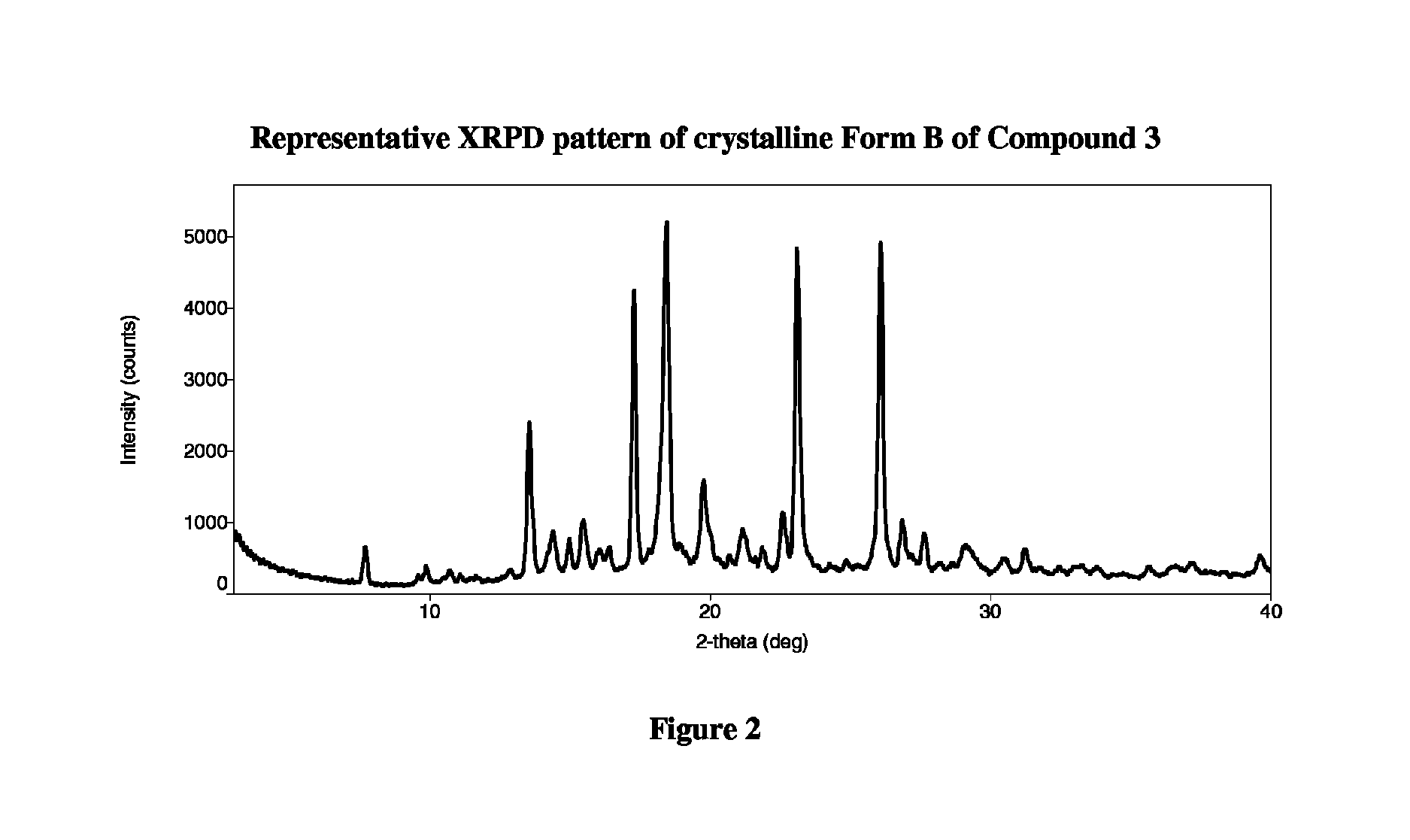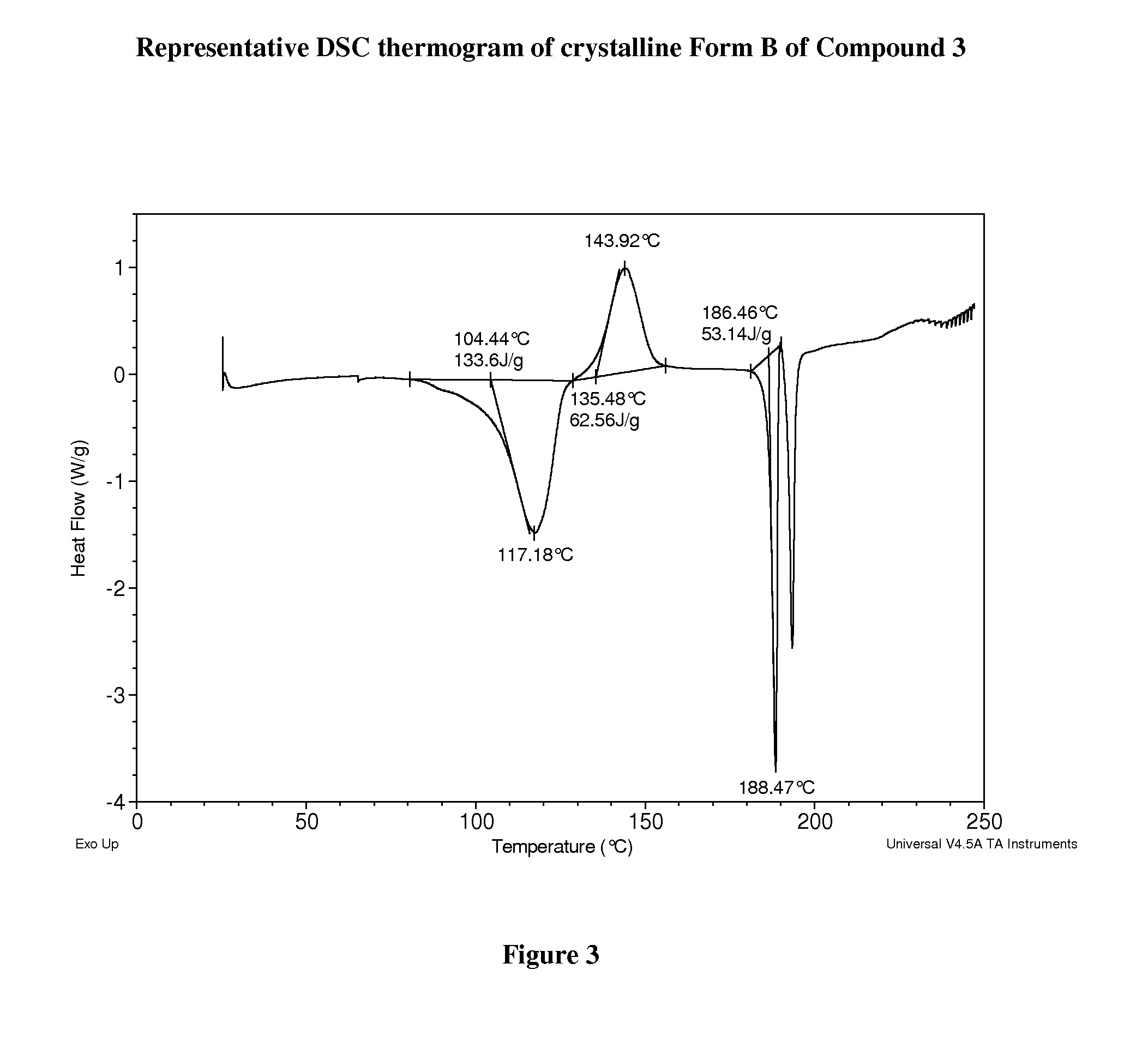Crystalline forms of therapeutic compounds and uses thereof
a technology of therapeutic compounds and crystallized forms, which is applied in the field of crystallized forms of therapeutic compounds, can solve the problems of irreversible vision loss in developed countries, achieve the effects of effective delivery of the intended therapeutic effect, quick elimination, and rapid penetration of mucus
- Summary
- Abstract
- Description
- Claims
- Application Information
AI Technical Summary
Benefits of technology
Problems solved by technology
Method used
Image
Examples
example 1
Synthesis of Compound 3, Method A
Compound 1: 4-(4-fluoro-2-methyl-1H-indol-5-yloxy)-7-(benzyloxy)-6-methoxyquinazoline
[0328]
[0329]4-Fluoro-2-methyl-1H-indol-5-ol (0.53 g, 3.2 mmol) was dissolved in N,N-dimethylfomamide (25 mL). The suspension was purged with nitrogen and potassium carbonate (0.92 g, 6.7 mmol) was added. 7-(Benzyloxy)-4-chloro-6-methoxyquinazoline (1.0 g, 3.3 mmol) was added and the suspension was purged with nitrogen again. The suspension was heated overnight at 85° C. in an oil bath. The solvent was evaporated. The residue was treated with water (100 mL) and sonicated. The solid was filtered off, washed with water and hexanes, and dried in high vacuum overnight leaving Compound 1 as a gray solid (1.4 g, 100%). m / z: 430 (M+H, 100%) (positive ionization mode).
Compound 2: 4-(4-fluoro-2-methyl-1H-indol-5-yloxy)-6-methoxyquinazolin-7-ol
[0330]
[0331]4-(4-Fluoro-2-methyl-1H-indol-5-yloxy)-7-(benzyloxy)-6-methoxyquinazoline (Compound 1, 0.46 g, 1.1 mmol) was dissolved in N,...
example 2
Synthesis of Compound 3, Method B
[0334]
[0335]To a solution of 2-amino-4-(3-chloropropoxy)-5-methoxybenzoic acid methyl ester (48 g, 175 mmol) in methanol (150 mL) was added methyl orthoformate (46.4 g, 438 mmol), ammonium acetate (33.7 g, 438 mmol). The reaction mixture was stirred at reflux for 5 hours. Water (200 mL) was added to the reaction mixture to precipitate product, which was collected by filtration, washed with water (200 mL) and methanol (50 mL), then dried under reduced pressure to give 44 g (93.4%) of Compound 4 as a white solid.
[0336]
[0337]A mixture of Compound 4 (75 g, 279 mmol) and POCl3 (100 mL) in toluene (500 mL) was stirred at reflux until the solution became clear. The solution was concentrated under reduced pressure and the residue was poured into ice water. After filtration, the solid was washed with water (500 mL×2) and dried to give 65 g (81.2%) of Compound 5 as a yellow solid.
[0338]
[0339]The mixture of Compound 5 (11 g, 38.33 mmol) and 4-fluoro-5-hydroxy-2...
example 3
Compound 3 Formulated as Mucus Penetrating Particles (MPP)
[0342]Compound 3 was formulated as mucus penetrating particles (MPP). Specifically, Compound 3 from Example 2 was milled in the presence of PLURONIC F127 (F127) to determine whether F127 1) aids particle size reduction to several hundreds of nanometers and 2) physically (non-covalently) coats the surface of generated nanoparticles with a mucoinert coating that would minimize particle interactions with mucus constituents and prevent mucus adhesion.
[0343]A milling procedure was employed in which an aqueous dispersion containing coarse drug particles and PLURONIC F127 (F127) was milled with grinding medium until particle size was reduced to approximately 270 nm (z-averaged) as measured by dynamic light scattering. These particles were found to have a polydispersity index (a measure of the width of the particle size distribution) of 0.142. In this example suspensions were buffered using DPBS (Dulbecco's Phosphate-Buffered Saline)...
PUM
 Login to View More
Login to View More Abstract
Description
Claims
Application Information
 Login to View More
Login to View More - R&D
- Intellectual Property
- Life Sciences
- Materials
- Tech Scout
- Unparalleled Data Quality
- Higher Quality Content
- 60% Fewer Hallucinations
Browse by: Latest US Patents, China's latest patents, Technical Efficacy Thesaurus, Application Domain, Technology Topic, Popular Technical Reports.
© 2025 PatSnap. All rights reserved.Legal|Privacy policy|Modern Slavery Act Transparency Statement|Sitemap|About US| Contact US: help@patsnap.com



